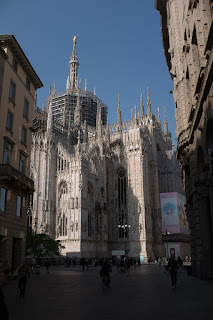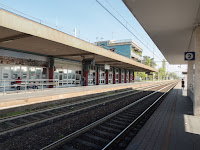Dinner in Navigli

We spent our last night in Navigli, a trendy restaurant area on the south side of Milan. Meaning “navigation” in Italian, dating to the 13 th century, the five canals were the chief method of brining goods into the city from the region. It is said that all the marble that went into the host of churches came to the city via barges on the Navigli. Use continued until the 1970s when the very last load of sand was delivered. Originally intended as an irrigation source, today that is its sole purpose. These days there are hundreds of little restaurants, fancy and fast food along the main canal. The left side tends towards the trendy, attracting young people for happy hour, the right side, expensive, elegant restaurants. The streets leading down to the water are lined with bars and fast food take out places. It is almost impossible to navigate those streets without smoking what seems like a hundred cigarettes. From our apartment, it was no more than 20 minutes by Metro and only involve


